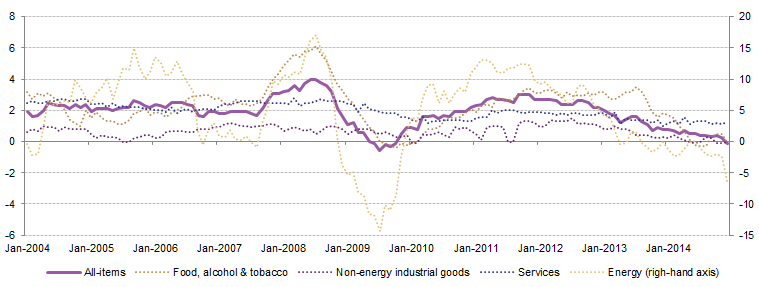The imminent arrival of QE brings euro-dollar parity closer
The euro has depreciated relative to the US dollar to its lowest level in almost a decade. In the meantime, time is running out for the European Central Bank (ECB) to implement a massive purchase of sovereign bonds aimed at quelling the threat of deflation. This much-anticipated operation, called Quantitative Easing (QE), will most likely be officially announced by ECB president Mario Draghi at the upcoming meeting on 22 January. The European currency has plummeted this year under the 1.1747 dollar threshold, the exchange rate at which it was first introduced in 11 European countries on 1 January 1999. The euro continues to weaken after having lost 12% of its value relative to the US dollar in 2014, the sharpest annual fall since 2005.


